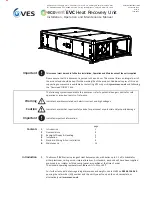
Primer
Crestron
Surround Sound
Localization
Our stereophonic ears can discern azimuth or horizontal (left-right)
directionality, and zenith or vertical (up-down) directionality. We
perceive directionality using the localization mechanisms of: interaural
time difference, interaural intensity difference, pinna filtering, and
motion parallax.
Interaural Time Difference
The horizontal position of a sound is determined by comparing the
information coming from the left and right ears. The Interaural Time
Difference is the difference in arrival time at each ear. The approximate
six-inch separation of the ears slightly delays the sound, each ear
receiving a slight difference when the sound is not equally distant from
the two ears. Although the time delay differences are very slight, the
brain extracts precise directional information from this information.
Human listeners are able to accurately locate the sources of sound from
almost any direction, even from above when interaural differences are
almost zero. Listeners are also capable of locating sound sources in a
room when the reflections from the walls are louder than the sound
coming directly from the source.
Interaural Time Difference
Interaural Intensity Difference
The head, shoulders and upper torso create a sound barrier at one ear or
the other. This acoustical shadow called the Interaural Intensity
Difference.
6
•
Surround Sound
Primer – DOC. 6122











































